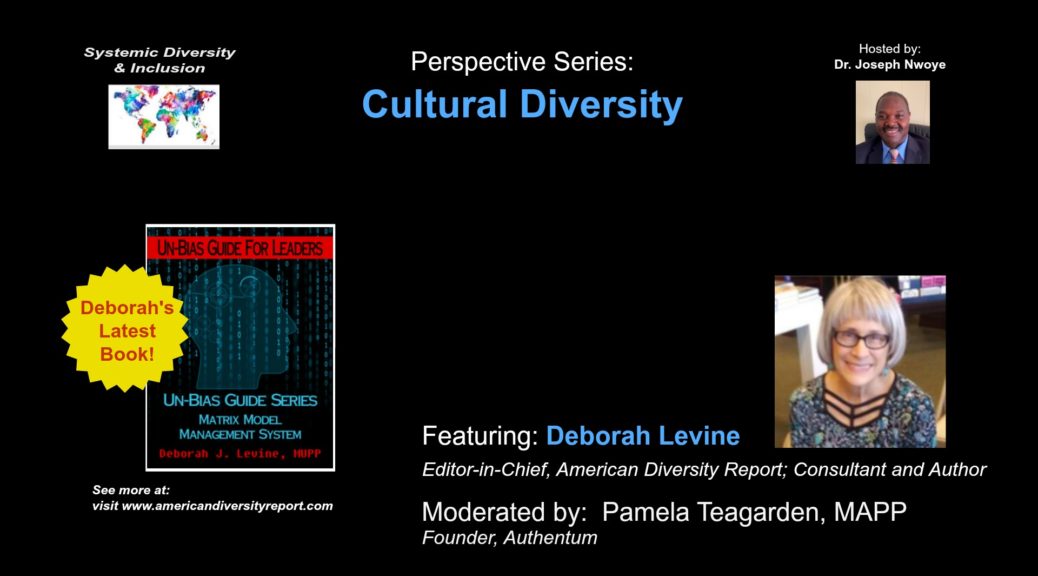The Chicago Council of Global Affairs brought 51 mayors & staff to Chicago to develop a flexible mayoral covenant on climate change within North America. The session in which I was a participant was led by the mayors of Chicago, Vancouver, Montreal, Washington and a modest size city of 150,000 in Mexico. NY TIMES writer Thomas Friedman chaired this session.
Allow me now to share some of the important points that arose from the discussion.
Category Archives: About Us
About the American Diversity Report
Diversity Marketing and Communication Today – by Anna Kucirkova
Five decades ago, the only consumer that brands cared about was the White Anglo-Saxon Protestants (WASPs). The reason being that they represented the majority of the consumer market. Some years down the line, a few companies/brands realized that directing marketing material towards the African-American ethnic population has the potential to boom up their business. So, they devised multicultural marketing strategies.
But today, a few more years down the line, shows a different consumer picture. Now, the population of America has become progressively diverse. The mixed-race population and Asian people are the two fastest growing groups in the US. On the other hand, there is a lag of growth in the Non-Hispanic white segment of the US population. From July 2015 to July 2016, Asian and mixed-race population grew by 3% while Non-Hispanic whites grew by just 5,000. Research suggests that by 2040, the minority groups today would combine to attain a majority in the US population. So, the marketing strategies that used to work a few decades back would no longer work in the future. This has led to professionals diversifying their marketing procedures.
Continue reading Diversity Marketing and Communication Today – by Anna Kucirkova
Diversity and Speech Part 4: Navigating the N-Word – by Carlos E. Cortés
Leelee Jackson and Geoffrey Stone are hardly household names in diversity circles. But in 2019, my interactions with Jackson, a talented young playwright, and Stone, a passionate defender of free speech, helped illuminate the challenging complexities of diversity and expression.
As a fellow of the University of California National Center for Free Speech and Civic Engagement, I have been examining the myriad tensions created when two laudable principles collide: the defense of robust speech and the effort to create greater inclusivity. This intersection has generated considerable controversy, including among diversity advocates.
Continue reading Diversity and Speech Part 4: Navigating the N-Word – by Carlos E. Cortés
Stopping the Stigma of Mental Illness – by David B. Grinberg
May is Mental Health Month, a nationwide effort to raise awareness and help end the stigma for people with mental health conditions.
Let’s remember that as public discourse about mental health increases, the associated stigma decreases. That’s why it’s critically important to shine a spotlight on a range of mental health issues affecting people of all ages, from depression to dementia.
Fostering open communication, education, transparency, advocacy and outreach — both online and off line— are solid strategies to eradicate prevalent myths, fears and stereotypes.
Continue reading Stopping the Stigma of Mental Illness – by David B. Grinberg
National Welding Month: Challenge & Opportunity – by Deborah Levine
In April, I joined the Chattanooga Regional Manufacturers Association (CRMA) Alliance in Manufacturing Excellence (AIME) as Editor-in-Chief of the American Diversity Report. I was invited to be the official communications person by Lulu Copeland, the facilitator and committee chair of CRMA AIME. Copeland is also the founding member of the Society of Women Engineers (SWE) for whom I facilitated an inaugural panel years ago. My assignment at this event marking National Welding Month was to interview women in the welding profession.
Continue reading National Welding Month: Challenge & Opportunity – by Deborah Levine
Navigating the “touch, no touch” quagmire: Part 2 – by Terry Howard
“Reach out and touch someone and make this a better world if you can.” ~ Diana Ross
Wow, before the ink was dry on my, “Hug me not Joe Biden,” fundamentally a “don’t touch” (or touch selectively) advisory, in the American Diversity Report, along comes Tiffany Field who has spent decades trying to get people to do just the opposite…. touch one another more.
Okay, I say don’t touch, she says do touch!
So what gives?
Continue reading Navigating the “touch, no touch” quagmire: Part 2 – by Terry Howard
Stopping Sex Bias on Wikipedia – By David B. Grinberg
Wikipedia, the popular online encyclopedia, continues to marginalize women on its English language pages and among its staff. This conclusion is not theoretical but unequivocal. It’s based on academic studies, public statistics and anecdotal evidence.
Wikipedia’s data is daunting, according to the Wikidata Human Gender Indicator.
To wit:
• Less than 18% of 1.6 million English Wikipedia bios are about women, up from 15% in 2014.
• Put another way: of about 1,615,000 bio pages, fewer than 300,000 are about women.
• Meanwhile, men account for about 90% of all English Wikipedia’s volunteer editors.
Wikipedia’s brand image is more reflective of 1920s paternalism than 21st century modernism. The San Francisco-based nonprofit Wikimedia Foundation, which oversees Wikipedia, has a noble mission: Democratize the free flow of information and knowledge to diverse populations worldwide.
But is English Wikipedia practicing what it preaches?
Continue reading Stopping Sex Bias on Wikipedia – By David B. Grinberg
The Anglophone Crisis in Cameroon – by OTIA BINIKISEH N. Eric
A reality of Cameroon, the country fondly referred to as “Africa in miniature”, “the land of milk and honey”, the most peaceful country.
Camaroon English Speakers
 Former Southern Cameroon (Northwest & Southwest regions of Cameroon) is considered a minority group in Cameroon. Approximately 20% of the population (5 Million) of Cameroon are from and reside in these two English-speaking regions. This minority population has been marginalized both in public institutions and state positions. The feeling of marginalization started developing and growing among the anglophone population, when the 1961 Federal Constitution was changed by President Ahidjo in 1972; changing the status of Cameroon from the Federal Republic, to the United Republic of Cameroon. The sentiment started to develop among the anglophone population that the francophone population was better represented politically, economically and socially. This fueled claims of self-determination within the Anglophone population. (ICG 02/08/2017).
Former Southern Cameroon (Northwest & Southwest regions of Cameroon) is considered a minority group in Cameroon. Approximately 20% of the population (5 Million) of Cameroon are from and reside in these two English-speaking regions. This minority population has been marginalized both in public institutions and state positions. The feeling of marginalization started developing and growing among the anglophone population, when the 1961 Federal Constitution was changed by President Ahidjo in 1972; changing the status of Cameroon from the Federal Republic, to the United Republic of Cameroon. The sentiment started to develop among the anglophone population that the francophone population was better represented politically, economically and socially. This fueled claims of self-determination within the Anglophone population. (ICG 02/08/2017).
This feeling of marginalization has been justified over the past years, where official documents are mostly released only in French. There was infiltration of English common law system practiced in the English speaking parts of Cameroon and infiltration of the Anglo-Saxon system of education practiced in the English speaking regions of Cameroon with the French system of education. Worst of all, French speaking teachers who can barely say “good morning” in English, were sent to teach major subjects in Anglo-Saxon schools in the English speaking regions of Cameroon. This has made the Anglophone population feel that their culture and identity is being assimilated and wiped out.
Continue reading The Anglophone Crisis in Cameroon – by OTIA BINIKISEH N. Eric
Deborah Levine: Cultural Systemic Diversity
The Systemic Diversity and Inclusive group gladly presents the recent interview with Deborah Levine, The Editor-in-Chief at the American Diversity Report and a member of the group. The interview was moderated by one of our own, Pamela Teagarden, a leader in her own right, and one of our own who has continuously provided unparalleled leadership to the group. Deborah is well endowed with a wealth of diversity and corporate experience. She is an expert in deciphering the framework for meaningful diversity and inclusion and inventor of a cognitive technology for dealing with unconscious bias. While making the case for infusion of competing perspectives, she can guide us to find common ground that fosters effective diversity and inclusion while advocating for the planning of strategic business priorities with emotional intelligence and smart decision making. Without further delay, please watch this remarkable lady and how she shared her work on systemic diversity…
Hug me not Joe: Part 1 – by Terry Howard
Joe hugged!
Joe’s hugging ignited a media firestorm!
Joe as in Joe Biden, former VP who’s tottering on a decision to make a run for president.
Now this narrative less about Biden and more about hugging and the need to both establish and/or reset social norms relative to personal boundaries. More than anything this is a wake-up call on hugging and the issues and questions the behavior raises.
So let’s get started.

